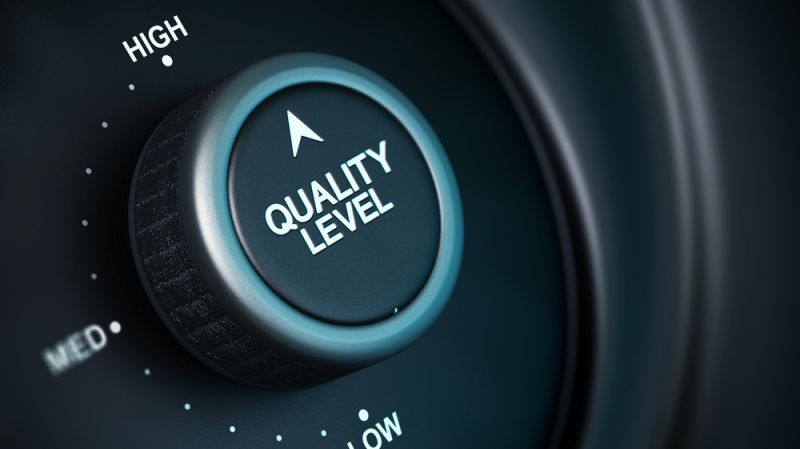Lean and the Duct Tape Conundrum
Good cost reductions free up resources to innovate and delight customers. Bad ones remove the reasons for customers to stick with you

Red Green would not be thrilled. The duct tape I had just picked up was fraying as I peeled it off the roll, separating from one sturdy strip into several skinny and useless strips with threads hanging off the edges. So much for the handyman’s secret weapon.
Duct tape is just one of many products out there that has been de-valued as a result of the “Walmart Effect” of constant cost pressures on suppliers. William Marquard does a very good job documenting the price reduction of duct tape in his book, Wal-Smart, from prices above $5 per roll to where it currently sits between $2 and $3 per roll. Some of those reductions were due to productivity increases on the production line — shorter cycle times, less waste — but some were the result of removing material cost, such as cheaper adhesive and less or thinner structural fabric. Whatever the reason, this less expensive product is also less effective.
Duct tape isn’t alone. Krazy Glue seems less crazy; for my last several repairs, it didn’t stick as advertised. Online forums suggest the product now has a lower concentration of cyanoacrylate (the functional ingredient in super glue) compared to the past. Light bulbs don’t last as long or have different colour temperatures (the ‘colour’ or whiteness of the light) in the same box. Whether it is the Walmart Effect or the effect of years of offshoring these products, I think as consumers we are losing in this continual battle to reduce cost. Some refer to this process as leaning out the supply chain, but this isn’t a Lean approach to manufacturing. It is just cheap.
People mistake Lean for cost reduction. Tell your employees you’re launching a Lean initiative and they will start dusting off their resumes, fearing layoffs and the “do more with less” approach. Lean will indeed involve some cost reductions, but they are what I call “good cost reductions” (like the difference between good and bad cholesterol). Good cost reductions are those that reduce complexity or waste within your system; bad cost reductions affect performance, morale, or services that your customers rely on. Good cost reductions eliminate customer anxiety and the risk of bad decisions from having too many products to choose from. They reduce complexity so an employee can carry out a process with less risk of mistakes. Bad cost reductions are arbitrary and destroy employee enthusiasm and the culture around the shop that you worked so hard to create.
Lean is the enabler that gives a firm the resources it needs to pursue an innovative strategy or execute a key project
Lean is a necessary skill in any company. When understood and applied properly, it can be very powerful. I call Lean the “enabler” that gives a firm the resources it needs to pursue an innovative strategy or execute a key project. When we apply Lean, we focus on value — what does the customer really want? We eliminate complexity, waste, and redundancy, shutting down processes, products, or services that no longer add value or confuse customers.
A few years ago, Maple Leaf Foods announced it would eliminate a number of their recipes for wieners from their portfolio; in 2010, they had 78! What’s more, they had 50 different sizes of hot dogs. How many different sizes of hot dogs do you really need? The worst part was that their production line was often shut down for more than an hour while workers switched between recipes. Kudos to Maple Leaf leadership for doing something about it. General Motors was forced to go through similar efforts as part of their funding package from the U.S. government. They had 11 car and truck brands at the time, each with distinct tooling, engineering, sales, distribution, and other functions. Put a Chevy pickup next to a GMC pickup and most of us couldn’t tell the difference, yet they both have distinct tooling, distribution, and other costs running into the millions of dollars.
How do you get started with Lean? Begin by examining the processes in which your employees are engaged. What reports do they issue that no one reads? How many meetings are they scheduled to attend every week? Which processes are necessary but are not really done well? Look also at your product and service offerings. Like Maple Leaf or GM, do you offer many similar products that confuse customers and consume resources or are they all distinct? Ask: Where are we wasting our time? My friend Darren tells his team to ask, “Would the customer be willing to pay for that?”
Lean is about focusing on reducing the costs, waste, and complexity in our systems that take away our ability to properly serve the customer. Do that well and create an agile, value-focused organization. Do that poorly and end up duct tape that doesn’t stick.
Barry Cross is adjunct assistant professor at Queen’s School of Business and co-author, with M. Kathryn Brohman, of Project Leadership: Creating Value with an Adaptive Project Organization.